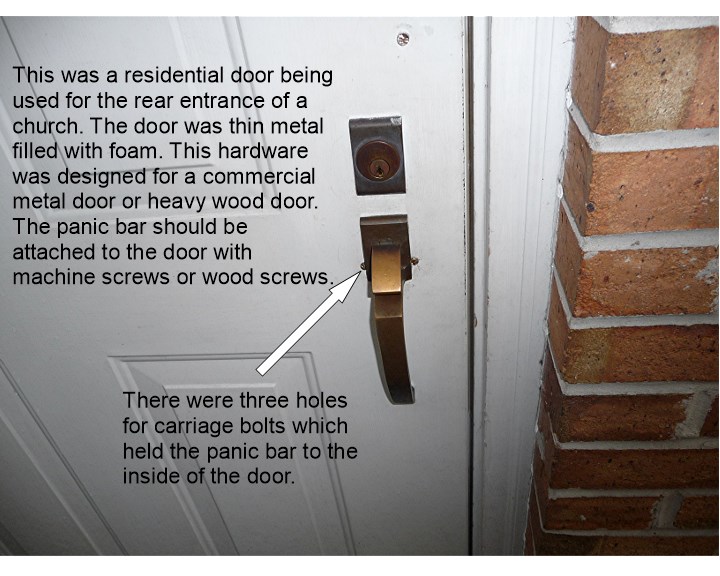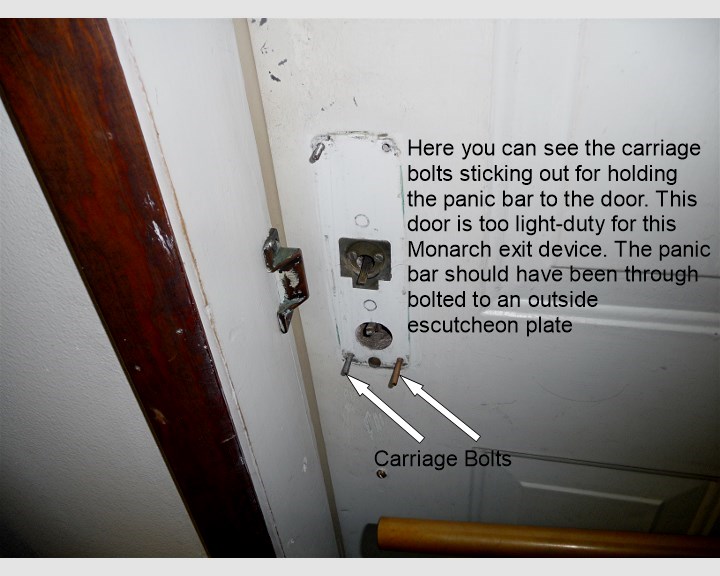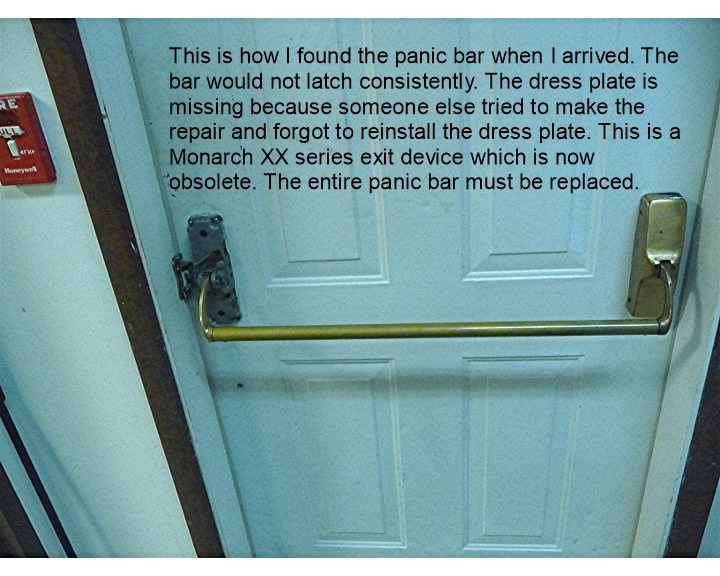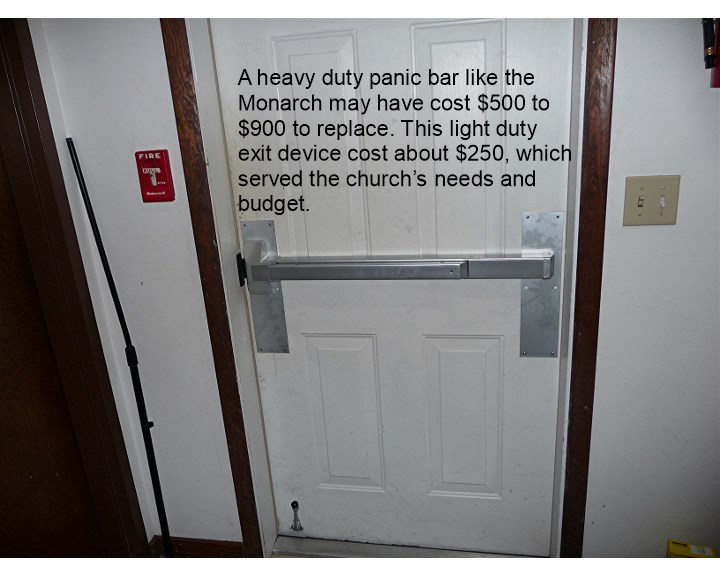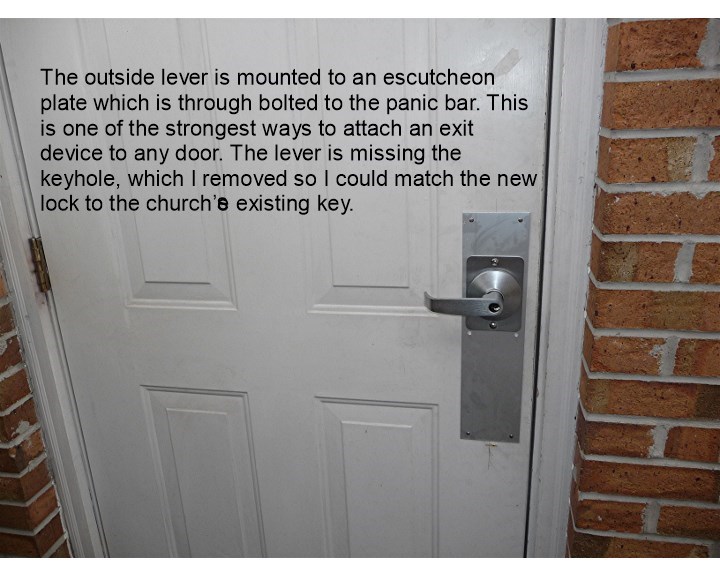Local building codes always call for exit devices in places of assembly. In this blog I will use “exit device” and “panic bar” interchangeably. Schools, churches, movie theaters and any building where people may assemble require clearly marked Exit doors and exit hardware.
The panic bar is the name more commonly known by the general public. A panic bar is mounted on a door about 42 inches from the floor and spans across the width of the door. The object of the panic bar is to give the occupants unobstructed egress from a building using one pushing motion. The Exit door must swing out of the building and be clearly marked with a lighted Exit sign above the door. Many schools chain and padlock the exit devices at night after the building is unoccupied. This special allowance is usually granted to the schools by the local Fire Marshall because double-doors with panic bars are easy to break into. You should never see chained exit devices while a school building is occupied. It is also illegal to install a deadbolt lock above an existing panic bar, this is a flagrant violation of the National Fire Protection Association (NFPA) 101 Life Safety Code and puts occupants at risk for injury or death in an emergency situation.
A few years ago I worked at a church where a panic bar was installed in the back door near the administration offices. The panic bar was installed on a residential door. The exit device did meet the Life Safety Code, but the door was not designed to support the heavy piece of hardware. There were continual problems of the exit device becoming loose on the door which lead to security problems and just general function problems. Finally the bar stopped latching, which is a security issue. I was called in to fix the panic bar when no one else could figure out what was wrong. The exit device was a good brand, but also obsolete. A replacement bar or parts could no longer be purchased. Other brand exit devices of equal quality would cost $500-$900, plus the outside handle and labor.
I questioned how much foot traffic went through the back door and discovered only the office personnel used the door to enter and exit the building during working hours. With this in mind I suggested a light duty panic bar which would meet the Life Safety Code and the church’s budget.
I covered the existing mounting holes with large push plates, this gave the new panic bar a new flat surface to mount onto. The church wanted the outside handle, “always locked.” No one can enter the back of the building unless they have a key. During Sunday School or other church functions the inside bar can be “dogged down,” which simply means the door will remain unlocked because the latch stays retracted. This also saves wear and tear on the moving parts of the exit device. The light duty panic bar cost about $250. The outside handle, push plates and labor brought the total job to around $500. A heavy duty panic bar would cost over twice that amount, but if the door is a high traffic door the high cost more than justifies itself.
Knowing the Life Safety Code and the traffic volume of the door are key to selecting the right exit device for the job. To find a competent legitimate locksmith in your area go to: www.findalocksmith.com
Another source of legitimate locksmiths and safe technicians is: www.clearstar.com

